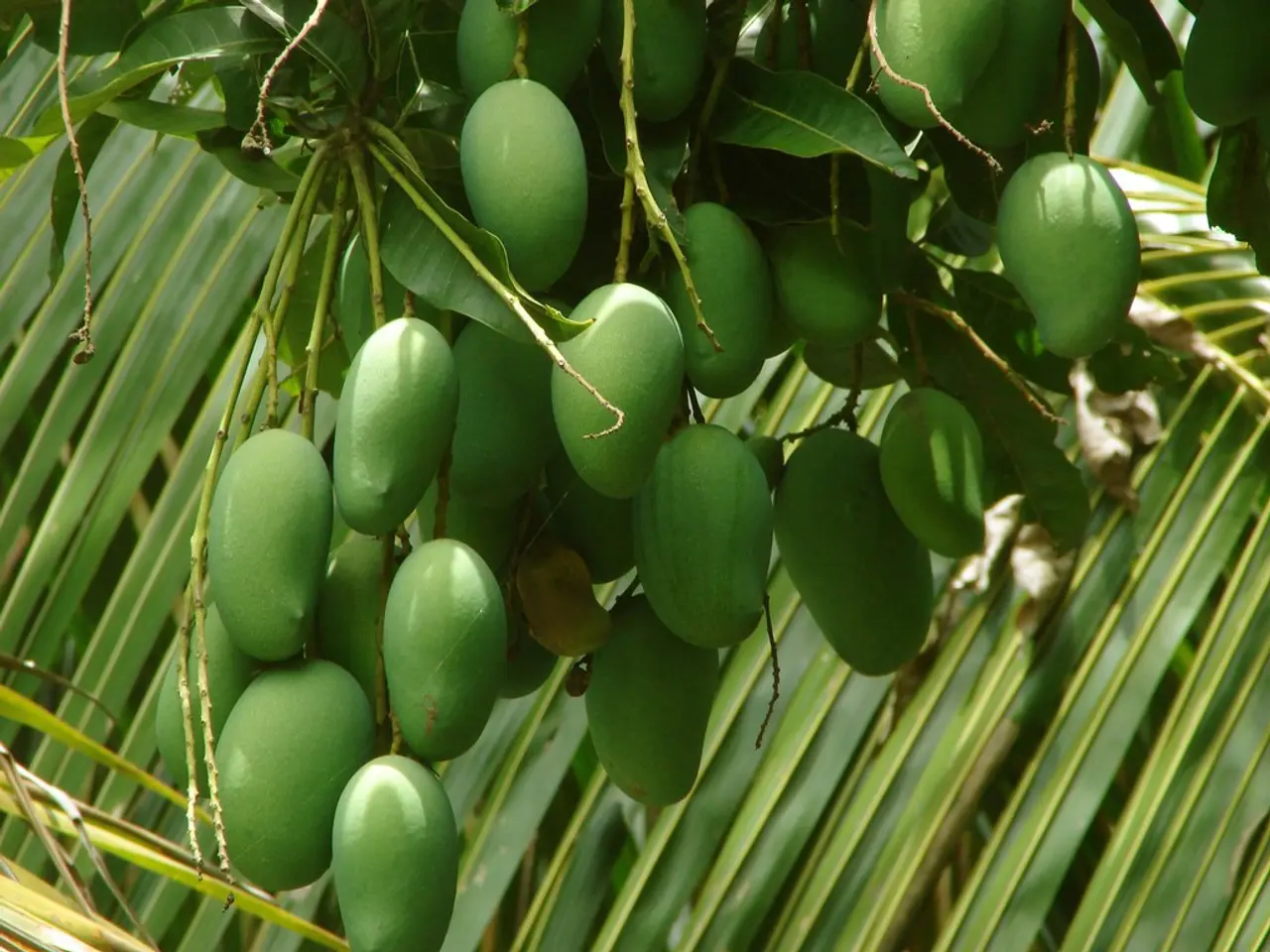Mango Farm Management: Essential Strategies for Maximizing Produce Harvest
In the lush, tropical landscapes where mango trees flourish, the secret to achieving high-quality yields lies in careful attention to detail and the implementation of best practices. Here's a guide to managing a mango farmland for consistent, top-notch produce.
Choosing the Right Farmland
The foundation of a successful mango farm begins with the selection of suitable land. Look for farmland with clear titles, good water access, motorable roads, and legal farming approval. Soil testing is essential to ensure its suitability, demonstrating that it has the necessary nutrients for mango cultivation.
Planting Healthy Saplings
Planting healthy saplings is the next step. A spacing of about 25×25 feet is ideal, allowing for optimal root and canopy development. Typically, yields begin in 3-4 years.
Efficient Irrigation and Fencing
Drip irrigation is essential for maintaining tree health and water use efficiency. Solar fencing helps protect trees from grazing animals, ensuring the mango trees receive the care they need to thrive.
Watering and Fertilization
Young mango trees need deep watering every 1-2 weeks initially, adjusted by season and rainfall, promoting strong root systems. Use a balanced fertilizer such as a 10-10-10 NPK formulation every 6–8 weeks during the growing season to ensure nutrient availability that supports both growth and fruiting.
Pruning and Canopy Management
Annual pruning removes dead or diseased branches, improves airflow and sunlight penetration, and promotes healthy fruit development. Mango trees require at least 6 hours of full sunlight daily.
Pest and Disease Control
Regular monitoring for pests like aphids, mealybugs, caterpillars, and fruit flies is crucial. Organic or bio-insecticides like neem oil or Bacillus thuringiensis formulations can effectively control infestations, protecting fruit quality and promoting sustainable farming.
Sustainable and Organic Practices
Incorporate natural compost, neem-based pest control, crop rotation, orchard cleanliness, pheromone traps, and rainwater harvesting to support environmental health and orchard sustainability.
Off-Season and Late-Season Management
For off-season or late-season management, techniques like flowering control via paclobutrazol applications and irrigation stress techniques can help regulate flowering and fruiting cycles.
Harvesting and Post-Harvest Care
During harvest, pick mangoes when they're most ripe but not overripe for better taste and quality. Familiarize yourself with the specific harvest time for your type of mango. After harvest, store mangoes in a cool, dry location, avoiding direct light to prevent rapid ripening. Maintain a well-regulated temperature and environment for post-harvest quality.
Beneficial Insects and Pest Control
Use beneficial insects such as parasitic wasps and ladybugs to combat pests, without compromising the ecosystem.
Proper Irrigation, Pruning, and Pest Management
Proper irrigation practices are essential for mango trees, particularly during critical stages of development. Pruning techniques promote wind flow and daylighting, reducing the risk of disease and improving mango quality. Prune during the post-harvest season and avoid pruning during flowering or fruiting. Effective pest and disease management is necessary to ensure better trees and increased yields.
Soil Management and Fertility
Adding regular manure and dung to the soil improves it. Soil preparation and fertility management are crucial for mango tree productivity and profitability.
Modern Techniques for Conserving Water and Monitoring Soil Moisture
Using spill water structure frameworks reduces water waste and monitors soil moisture levels.
Handling Mangoes during Harvest
Handle mangoes carefully during harvest to prevent injuries. Choose mangoes with the tail still attached to prevent sap from being consumed. Use clean, pristine equipment and stack mangoes in cushioned bushels.
By following these best practices, mango farmland can be managed for consistent, high-quality yields year after year.
Incorporating suitable home-and-garden practices within a mango farmland contributes positively to the farm's lifestyle and productivity. The art of gardening involves selecting fertile and accessible farmland, planting healthy saplings with optimal spacing, implementing efficient irrigation systems, managing soil fertility with regular manure and dung application, and practicing pruning techniques for improved airflow and sunlight penetration.




